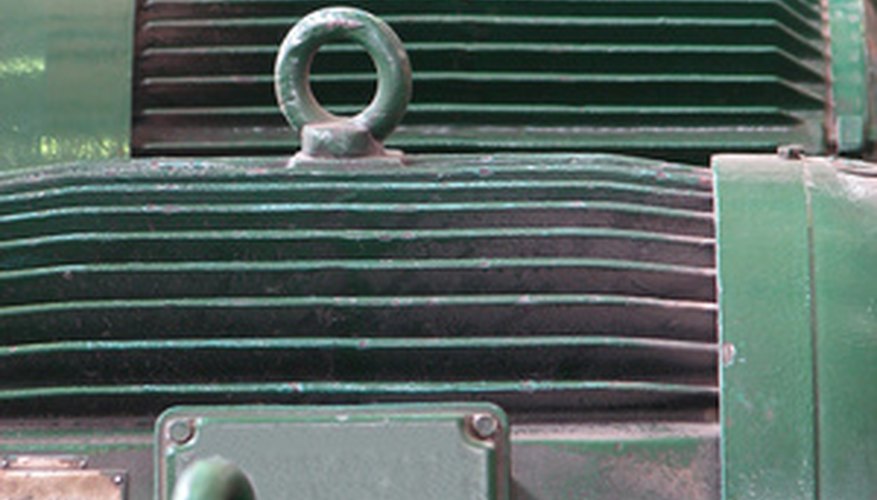A motor, with the power turned off, presents little resistance to electricity because the motor windings act almost like a short until they become energised. When power is turned on, the current flow may be many times what the current flow is when the motor is operating at rated speed under a load. This inrush of current lasts only a fraction of a second. No calculation for the exact inrush current is possible, but a range may be determined if the manufacturer's documentation does not specify it.
- A motor, with the power turned off, presents little resistance to electricity because the motor windings act almost like a short until they become energised.
- No calculation for the exact inrush current is possible, but a range may be determined if the manufacturer's documentation does not specify it.
Read the motor nameplate on the motor and find the voltage listed on it. The National Electric Code mandates all motors have a nameplate that provides information specific to the electrical operating characteristics of the motor.
Look for the "Locked Rotor Letter Code" or "Locked Rotor Code" on the motor nameplate. This code will be a letter from "A" to "V" but will not include "I," "O" or "Q." These letters are omitted to avoid confusion.
Consult the NEMA Locked Rotor Code Table and find the letter code on it. Follow the letter code row to the right and find the range given. The range is given in thousands of Volt-Amps, or kilowatts.
Multiply each number in the range by 1,000. Divide each result by the motor voltage found on the nameplate. The resulting range is the inrush current range. For example: A 3.5-horsepower, three-phase motor nameplate lists the motor voltage as 230 volts and the locked rotor code is "K." The range given on the table is 8.0 to 8.99 kVA. Multiplying by 1,000, the range becomes 8,000 to 8,990 VA. Dividing by the motor voltage of 230 volts gives the inrush current range as 34.8 amps to 39.1 amps.
- Consult the NEMA Locked Rotor Code Table and find the letter code on it.
- For example: A 3.5-horsepower, three-phase motor nameplate lists the motor voltage as 230 volts and the locked rotor code is "K." The range given on the table is 8.0 to 8.99 kVA.
TIP
The inrush current is only momentary and if the circuit breaker is sized properly, it will not trip in the fraction of second the current spikes. As the motor windings become energised, they present resistance to the flow of current and the current begins to drop. As the motor comes up to full speed, the current level will be at the level specified on the motor nameplate as the full-load current.
WARNING
The voltage is important to determining inrush current. If the motor nameplate lists multiple voltages, the voltage being used must be determined. An easy place to measure this is at the motor disconnect. The type of voltage determines how the measurement is made. Measure three-phase current between two hot terminals and double it. Split phase current is measured between two hot terminals. Single phase current is measured from the hot terminal to ground.
